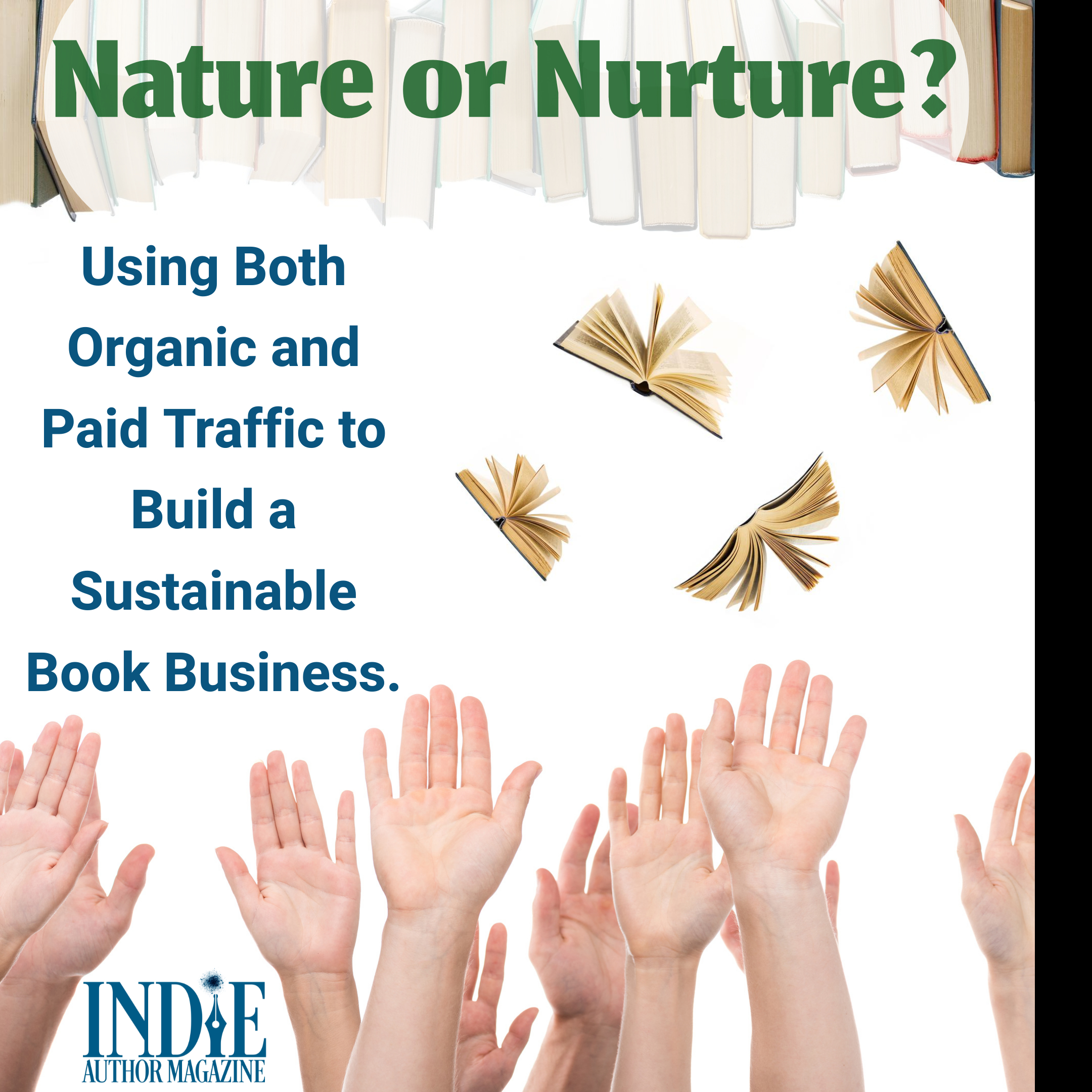Using Both Organic and Paid Traffic to Build a Sustainable Book Business
Under the umbrella of traffic, you can attract a potential reader’s attention in two ways: naturally, through your interactions with readers online, through social media, or in person; or by nurturing a new connection with paid advertising and marketing opportunities. When you spend money to hopefully purchase a specific audience’s attention, you’re engaging in advertising. Organic traffic is the opposite, using no money at all for a reader’s attention.
When discussing marketing and promotion strategies, authors often treat organic traffic and paid traffic as entirely different categories. But both means of gathering readers’ attention offer valuable tools for an author’s tool chest. Although they are different in execution, the data each provides can help you bolster the other, growing your business in every direction.
Target Audiences
In an ideal scenario, your readers, whether brought to your books by organic or paid marketing methods, will be of the same audience. That audience should be your ideal reader: the person most likely to purchase and enjoy your book. The first step to analyzing your traffic is to consider what your readers expect from the books they enjoy, and how your work fulfills those expectations.
Across the internet, readers’ attention is divided. There are hundreds of apps, services, and companies attempting to capture their customers’ attention. Readers have become desensitized to the noise, which leaves authors looking to grow their traffic an opportunity to stand out by speaking directly to a reader and making them feel heard. View your conversations with readers as an opportunity to notice them rather than notify them. There is an unspoken association with how much effort an author gives to connecting with their readers and how much the reader then feels compelled to give that author their attention. Authors can tap into this connection in paid and unpaid advertising if they are willing to speak to their readers how they are best spoken to.
Some of the best performing pay-per-click ads started off as social media posts, such as TikTok or Instagram Reels. Your organic content, especially that content which performs best in terms of engagement, reach, or clicks, is ripe and tested ad copy for your paid ads, and it works because you’ve already seen proof that it connects with your target audience. Readers want to be noticed, and when they engage with your organic content, that is a sign that your audience has felt compelled enough to interact with whatever you have posted.
Equally, paid traffic should not be neglected as a source of information about your readers. If an ad is converting particularly well, analyze that ad to determine what about it is working. Does the copy address something your readers have been talking about or asking for? Are you solving a problem for them? Do you have a compelling offer? Is the imagery or video scroll-stopping? If your ad is only converting while your book is discounted, it may be your offer that’s attracting potential readers to click. However, if the book is full priced and has consistent sales, your ad copy, landing page, and description may be connecting with your readers.
With both strategies, consider where your ideal audience likes to hang out. Your target audience likely has a preferred social media app or digital space. Whether that be TikTok, Facebook, Instagram, X, or somewhere else, you should attempt to create content that not only speaks to your ideal reader but also reaches them where they have a higher likelihood of finding it. Just like with paid traffic, pushing the wrong kind of organic traffic, or pushing organic traffic to the wrong place, will yield less optimal results than if you meet your customer where they hang out and speak to them in a way they prefer.
Key Performance Indicators
Any paid advertising will be loaded with Key Performance Indicators (KPIs) that can help you formulate strategies for your website and social media presences, drawing the attention of your organic audience as well. Examples of KPIs are clicks, conversions to sales, and click-through-rates, and depending on your sales strategies, each one has a different value for your business. For example, authors using direct sales are most likely to find value out of and accurately track conversions of an ad thanks to the analytics on the back end of their storefront. An author focusing on sending traffic to retailers, on the other hand, might look at engagement and cost-per-click metrics to critique their ad’s performance. In all this examination, you’re looking for metrics that signal a perfect combination of copy and content that readers have no choice but to engage with, and identifying the crossroads between where your reader feels noticed most and your content.
Organic traffic refers to the audience you attract through unpaid avenues, but that doesn’t mean the content you create for these readers isn’t targeted. Just like with paid ad KPIs, when discussing the performance of organic traffic, there are KPIs an author can use to determine the quality of their organic advertising efforts.
Core social media KPIs include engagement, follower metrics, and conversion click-through rate. These are performance indicators outside the sale itself, and while actual sales numbers are important, you should analyze the data provided by your marketing campaigns to diagnose what is working and what isn’t. These metrics are found on the back end of social media channels and email service providers, and most offer breakdowns by KPI, date, age, and more useful identifiers to help you evaluate your audience.
Here’s a more in-depth look at how to evaluate some common KPI metrics for the health of your connection with your audience.
Engagement
Engagement simply means how someone is interacting with your content. This can mean likes, comments, shares, and clicks. With engagement, the user has taken an action with the content, meaning you have captured their attention long enough to stop their scrolling. Look for posts that see more interaction overall to analyze what catches people’s eyes the most, and consider what your audience or the algorithm prefers on each platform—your Facebook followers may enjoy longer text posts if they include images, and Instagram may prioritize Reels or carousel posts over single images.
Follower Metrics
Follower metrics reveal the rate at which you are gaining new followers, which reflects how well you’re speaking to your target audience. If someone follows you, this is supposed to mean they want to see more of what you have to offer.
This doesn’t account for a small but engaged following compared with a larger, unengaged audience. KPIs can reflect this concept. TikTok, for example, shows how well received videos are by your current following, and how many followers followed you from a specific video. TikTok also shows you how many of your current followers watched your videos. These metrics show the health of your following beyond sheer numbers and will help determine how engaging your content really is.
Conversion Click-Through Rate
At the end of a person’s interaction with your content, your goal might be a purchase, at which point the click-through-rate (CTR)—the number of users who clicked a link you’ve directed them to within your content—can be examined. CTR means you’ve not just gotten the user’s attention, but you’ve also compelled them enough to look at what you have to offer. Both paid and organic traffic can benefit from a look at CTR, but how to calculate the efficacy of your content will depend on the method you’re using—organic traffic is most cost effective to test, for example, whereas paid traffic can offer the most predictable results.
Although organic and paid traffic have their distinct advantages, there is some crossover between both sides of the traffic coin that can give you valuable knowledge by which to judge how well you know your target audience. No matter your strategy, organic traffic is a good place to start determining what your paid content audience will best respond to, and your paid audience will show you what messages truly resonate with your target audience, even if they found you organically. Use the data to your advantage to make the most well-informed, well-considered decisions, and think like an entrepreneur, ready to use every tool available.
David Viergutz


